2017 Quinta da Boavista Vinha do Oratório Vinhas Velhas
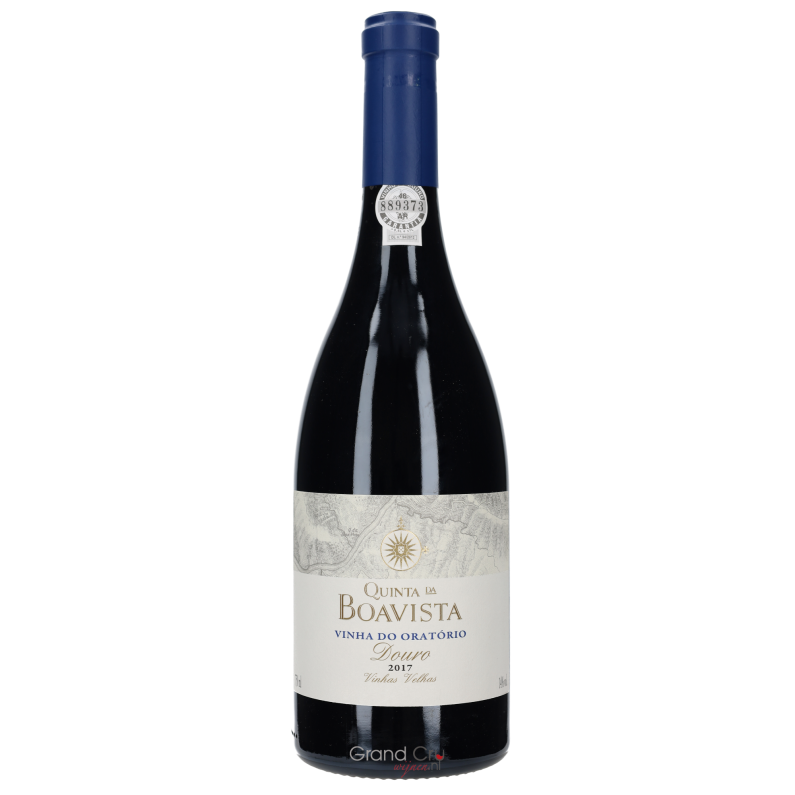
| Wijnsoort | Rood |
|---|---|
| Land | |
| Regio | |
| Wijnhuis | |
| Jaar | 2017 |
| Druif | |
| Inhoud (Alc) | 0.75 ltr (14%) |
| Drink venster | 2022 - 2040 |
Lage voorraad
Nog maar 1 over
Omschrijving
Quinta da Boavista ligt in de buurt van Pinhão, op de rechteroever van de rivier de Douro, en heeft een buitengewoon uitzicht over de rivier. Het is een van de meest iconische landgoederen in de afgebakende regio, niet alleen bekend om zijn historische band met de Baron van Forrester, maar ook om zijn 36 hectare wijnstokken van hoge kwaliteit.
De iconische wijngaard van Quinta da Boavista, de Vinha do Oratorio, wordt gevormd in hoge en gebogen terrassen in de vorm van een oratorium die acht meter hoog worden. Deze wijngaard, gelegen op het oosten, heeft een hoogte die varieert tussen 80 en 175 meter en heeft een mengelmoes van meer dan 25 Douro-druivensoorten. Met een gemiddelde leeftijd van meer dan 90 jaar, stellen deze wijngaarden ons in staat om een wijn te produceren met een opmerkelijke concentratie en complexiteit. De druiven voor deze wijn komen van één perceel, genaamd Oratorio (Oratorium).
De Boavista Vinha do Oratório is een Vinhas Velhas (+90 jaar oud) oftewel Vieile vignes (VV). Om ervoor te zorgen dat de kenmerken van de variëteiten die in deze field-blend zitten gebruiken ze bij Quinta da Boavista handmatige oogst- en handmatige druivensorteringsprocessen, gevolgd door een zachte ontsteling van de bessen en pletten. De druivengisting vindt plaats in nieuwe Franse houten vaten van 500 liter. Na een periode van maceratie, blijft de resulterende wijn 16-20 maanden rijpen in vaten van 225 liter Frans eiken barrriques. De wijnen worden niet gefilterd of koud gestabiliseerd en daarom kunnen ze met het ouder worden een sediment produceren.
De wijn Quinta da Boavista Vinha do Oratório Vinhas Velhas heeft eendiepe robijnrode kleur en voorspelt een dichte en geconcentreerde wijn. In de neus ontvouwen de complexe aroma's zich in opeenvolgende lagen, met eerst zwart fruit, gevolgd door tonen van snuiftabak, kruiden en hints van balsamico. De smaak is vol en zijdeachtig, met royale tannines en zuren, culminerend in een boeiende afdronk. Een wijn met veel levendigheid.
WEETJE: in de tab: Bijlage vindt u de officiële factsheet van deze wijn. Wij sturen u die automatisch toe bij een bestelling van deze wijn.
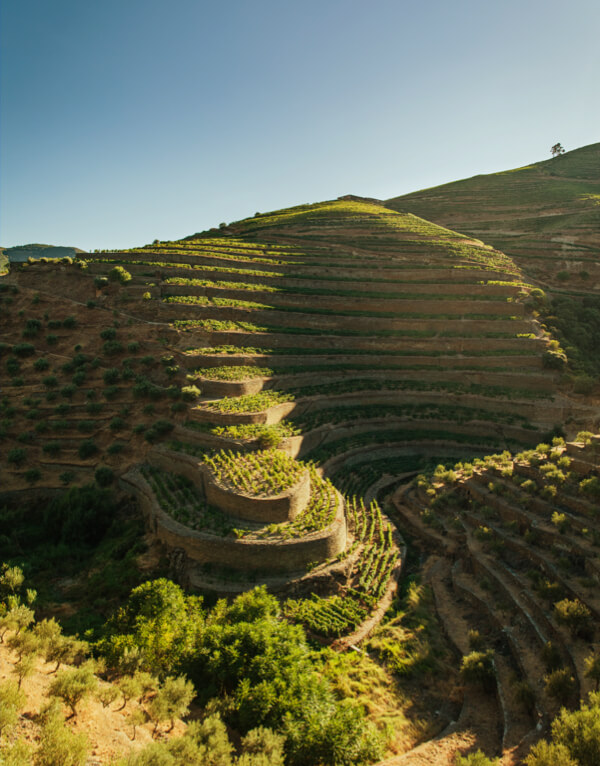
Specificaties
| Block Bundle Options | Nee |
|---|---|
| Wijnsoort | Rood |
| Land | Portugal |
| Regio | Douro |
| Wijnhuis | Quinta da Boavista |
| Druif | Blend Rood |
| Biologisch gecertificeerd | Nee |
| Natural wijn | Nee |
| Vegan | Nee |
| Jaar | 2017 |
| Drinken vanaf | 2022 |
| Drinken tot | 2040 |
| Alcohol % | 14 |
| Alcoholvrij/arm | Nee |
| Inhoud | 0.75 ltr |
| Houtrijping | Ja |
| Bubbels | Nee |
| Dessert wijn | Nee |
| Afsluiting | Kurk |
| Parker rating | 94 |
| Smaakprofiel | Aards, Donker fruit, Droog, Houtgerijpt, Krachtig, Kruidig, Tannines, Vol |
| Drink momenten | Barbecue, Cadeau!, Met vrienden, Romantisch |
Professionele Recensies
Parker
Rating
93+
Release Price
$150
Drink Date
2021 - 2035
Reviewed by
Mark Squires
Issue Date
31st Mar 2021
Source
End of March 2021, The Wine Advocate
The 2017 Vinha do Oratório Vinhas Velhas is a single-parcel wine with very old vines in Cima Corgo. It was aged for 20 months in two-thirds new French barriques and comes in at 14% alcohol. Refined and rather sophisticated, this is marred by a bit too much new wood just now, but the wine proves that with air the woody nuances won't be a problem, even if you open it today. Very understated, this has a fresh feel with ample finesse. This has a bit more of a backbone than the Reserva, but the tannins are ripe, making this Oratório easy to drink young. Still, there's a bit more bite on the much longer finish here, even if the styles are vaguely the same. As with the Reserva, the expressive fruit and graceful demeanor will make this a pleasure to drink, but I do wonder if it will develop as well as one would hope for a wine in this price category. It's lovely. It may be a step short of truly distinguished. There were just 1,500 bottles produced.
This Quinta was acquired by Sogevinus in mid-2020, hence the new producer name. The wines were formerly listed under Lima & Smith. These 2017s were the last made by the Lima & Smith team (and the labels still indicate that), but the inventory is now controlled and distributed by Sogevinus, so I've made the change now. Sogevinus says that 2020 was the first harvest at Quinta da Boavista with the Sogevinus technical team under the supervision of Jean-Claude Berrouet, who remains connected to this project. Needless to say, the wines are small-production wines, so if you are interested, jump on whatever you find. Losing the Quinta is a great loss to Lima & Smith, no doubt; the Douro wines Lima & Smith make from their Quinta das Tecedeiras property are not nearly as impressive, but Sogevinus acquired a prize.
Regarding the farming going forward here, and at Kopke and other Sogevinus properties, Ana Pereira described the winery's sustainability initiatives:
"All our Quintas (including now Quinta da Boavista) are under the umbrella of a sustainable production program which is based on three things: integrated production of wine (IPW), biodiversity protection and precision viticulture. As for the first two points, our biggest challenge is the application of sustainable practices in the vineyards, to be supportive of the local environment by reducing the use of phytochemicals and increasing protection of biodiversity. There is a permanent strip of grass between the vine rows in all the company's vineyards, and the slopes of both the paths and the one-row vine terraces are cultivated with indigenous plant species. These are monitored and managed to guarantee a long flowering period that enables the natural enemies of pests to live longer in the vineyard. We also have the “Eyesontraps” system. ADVID is currently leading this project that works as an intelligent solution for plague prevention, supporting local temperature registration, automated insect detection in traps and treatment recommendation for detected plagues in the vineyards.
"Finally, also in order to reduce the usage of pesticides in the vineyard and to increase biodiversity, we have been using a technique we call 'sexual confusion' to protect the vines against the grapevine moth. This technique consists in diffusing a compound similar to the pheromones issued by the females of the insect, which causes disruption in the communication between male and female specimens, preventing them from mating and therefore laying viable eggs. In the Demarcated Region of Douro, Quinta de S. Luiz was [a] pioneer in using this innovative method which began in 2000 and is used across 90 hectares of vines. Besides being safe for humans and non-pollutant, the sexual confusion technique is also environmentally interesting because, unlike the chemical insecticides, it does not interfere with the natural enemies of the vines’ pests. These practices have proven sufficient to keep down the outbreaks of the grapevine moths to levels that make the use of insecticides unnecessary."
Lorem ipsum dolor sit amet, consectetur adipiscing elit. Sed do eiusmod tempor incididunt ut labore et dolore magna aliqua...
Exclusieve Inhoud
Log in om professionele wijnrecensies van wereldberoemde critici te ontgrendelen
Wijnhuis
Voor de start van Quinta da Boavista gaan we terug naar de eerste afbakening van dit wijngebied in de Douro, in 1756. IHet landgoed is duidelijk gedocumenteerd op gerenommeerde kaarten uit 1843 die zijn gemaakt door de eigenaar Joseph James Forrester (Baron van Forrester). Deze kaarten kregen later bekendheid als belangrijke referenties voor het gebied: ‘Mappa do Paiz Vinhateiro do Alto Douro’ (1843) en ‘Douro Portuguez e Paiz Adjacente’ (1848). In de tussenliggende jaren tot 2020 had het wijnhuis een groot aantal eigenaren en uitdagingen.
Maar door de jaren heen groeide de expertise in het wijnhuis gestaag. Dit kreeg een boost toen Sogevinus Fine Wines, een van de grootste Douro-wijngroepen, het wijnhuis kocht in 2020. Ondanks het lange bestaan van Quinta da Boavista, heeft het wijnhuis sinds 2020 een exponentiële groei doorgemaakt in expertise & kwaliteit en het staat sindsdien bekend als hét Douro-icoon.
Want het begon allemaal in de Douro: Deze majestueuze rivier, die Portugal binnenkomt vanuit Spanje naar de Atlantische Oceaan, in Porto, is de ruggengraat van een van de meest authentieke en unieke wijnregio’s ter wereld. Het is de bakermat van een indrukwekkende verscheidenheid aan inheemse variëteiten en van vele Vinhas Velhas (oude wijnstokken). Op de rechteroever van de rivier ligt het iconische landgoed van Quinta da Boavista, met 36 hectare wijnstokken van hoge kwaliteit. Deze wijngaarden zijn verspreid over een oogverblindende geometrische setting van met de hand gebouwde terrassen en ondersteund door kleine leistenen muren, die typerend zijn voor de regio. Sommige terrassen zijn bijna acht meter hoog en dit, samen met het extreme klimaat en de dramatische steile hellingen, zorgt voor een uniek terroir.
De wijnen van Quinta da Boavista behoren tot de absolute Grandcru's van Portugal. De Vinhas Vehas Ujo en Oratorio zijn inmiddels internationale icoon wijnen.
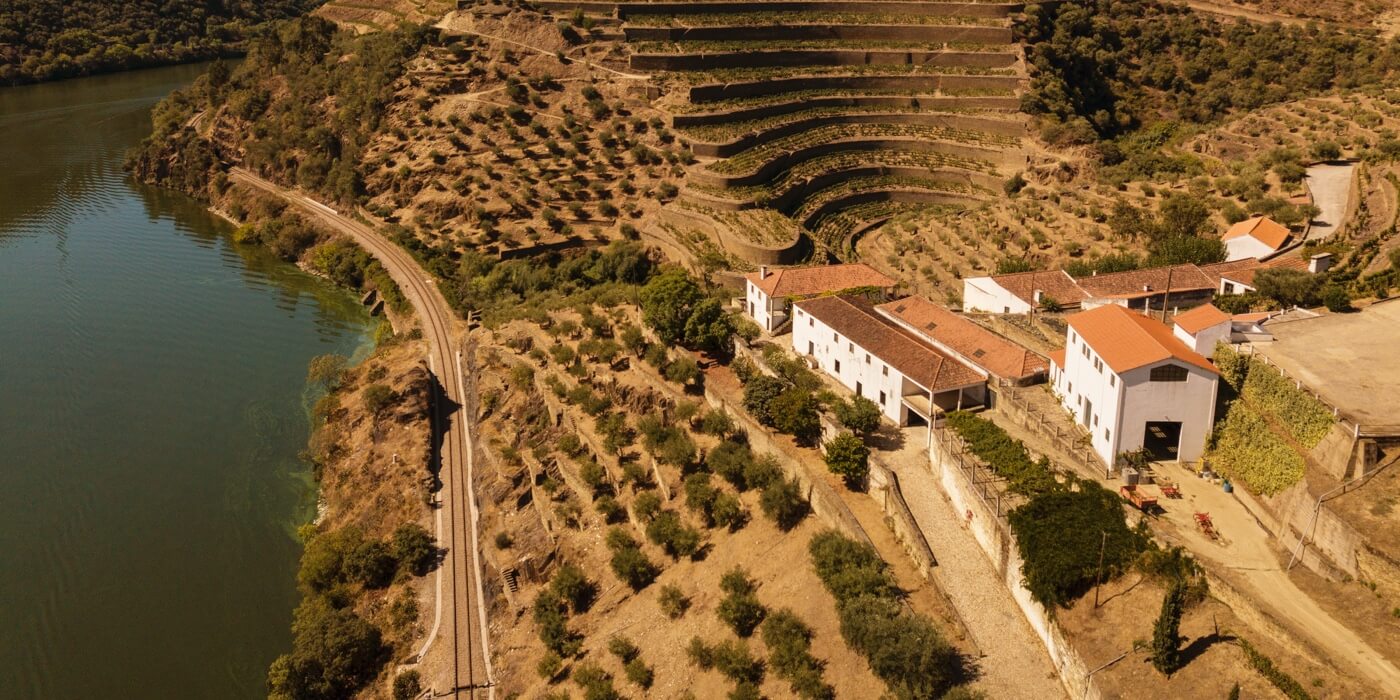
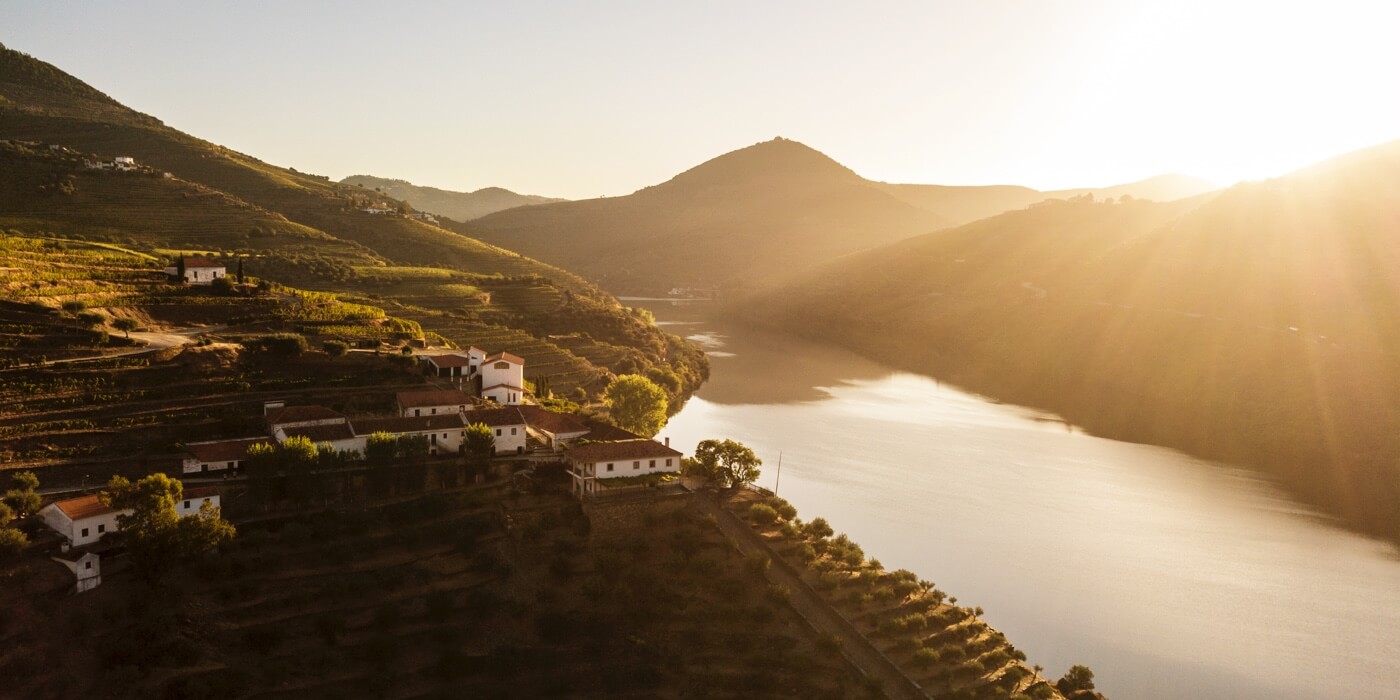
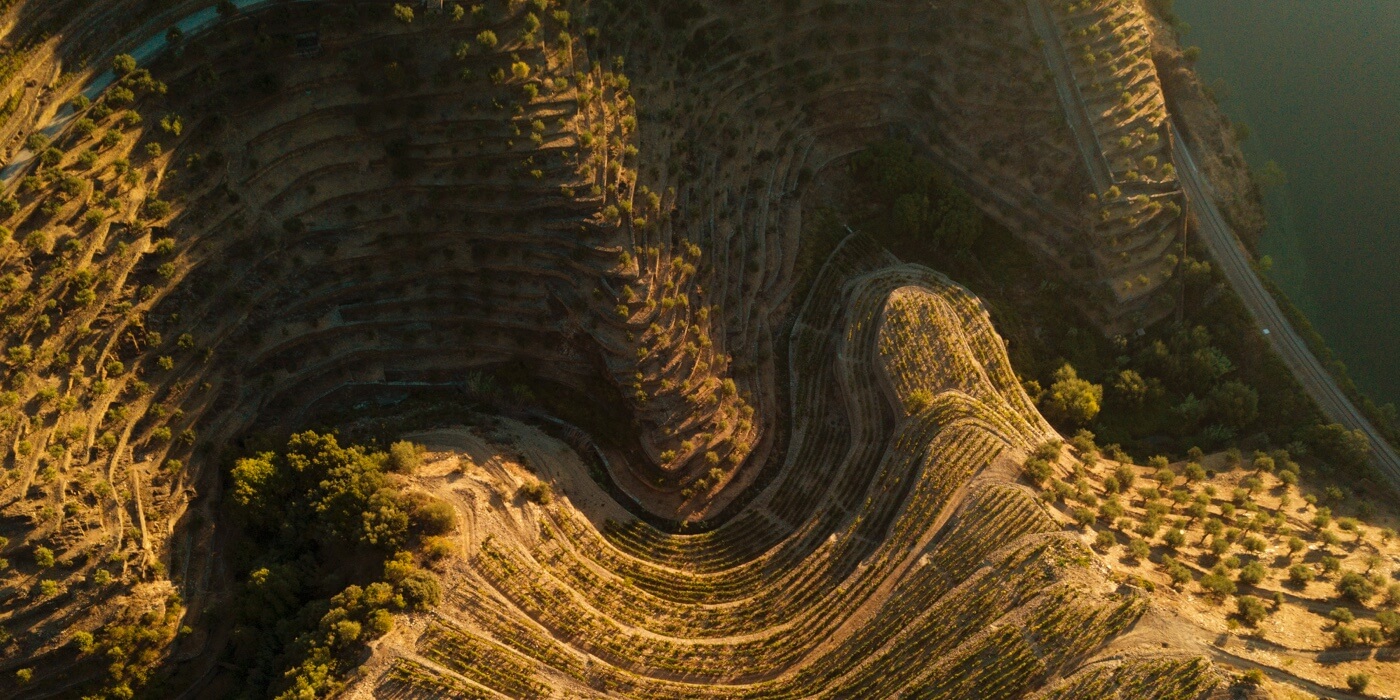
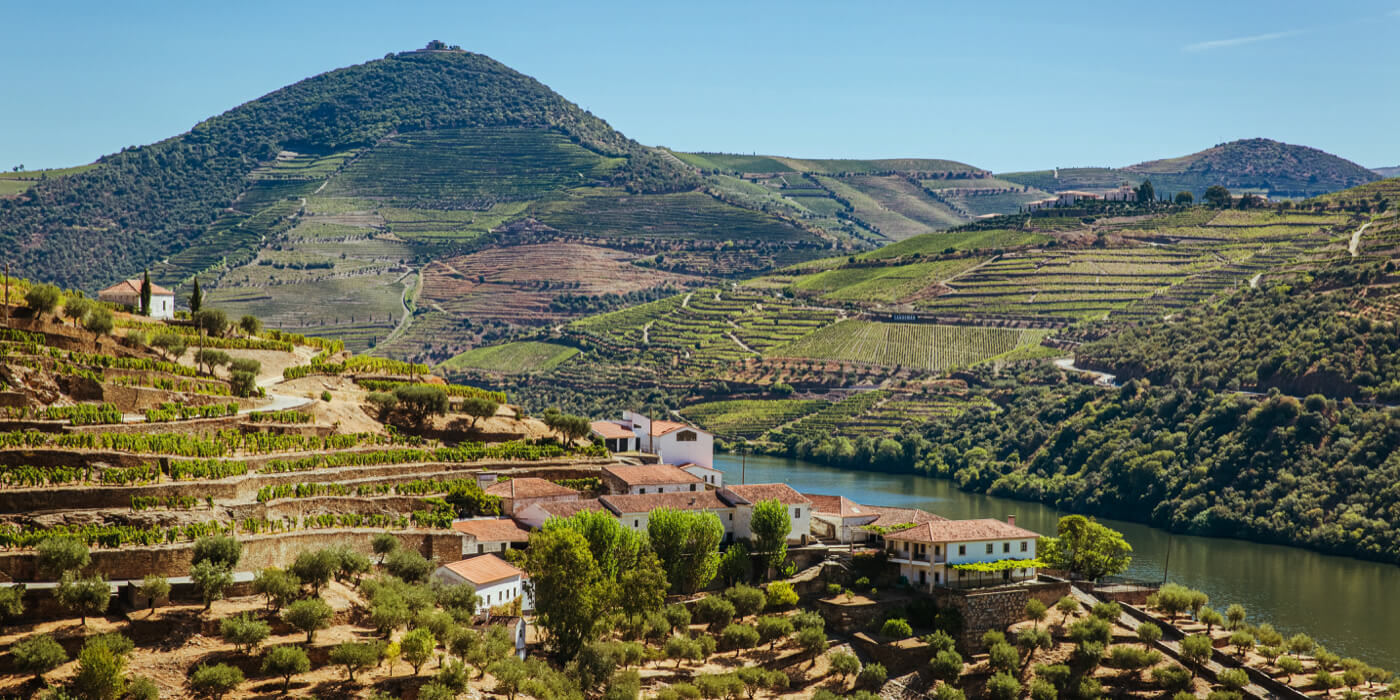
Quinta da Boavista ligt in de buurt van Pinhão, op de rechteroever van de rivier de Douro, en heeft een buitengewoon uitzicht over de rivier. Het is een van de meest iconische landgoederen in de afgebakende regio, niet alleen bekend om zijn historische band met de Baron van Forrester, maar ook om zijn 36 hectare wijnstokken van hoge kwaliteit.
De iconische wijngaard van Quinta da Boavista, de Vinha do Oratorio, wordt gevormd in hoge en gebogen terrassen in de vorm van een oratorium die acht meter hoog worden. Deze wijngaard, gelegen op het oosten, heeft een hoogte die varieert tussen 80 en 175 meter en heeft een mengelmoes van meer dan 25 Douro-druivensoorten. Met een gemiddelde leeftijd van meer dan 90 jaar, stellen deze wijngaarden ons in staat om een wijn te produceren met een opmerkelijke concentratie en complexiteit. De druiven voor deze wijn komen van één perceel, genaamd Oratorio (Oratorium).
De Boavista Vinha do Oratório is een Vinhas Velhas (+90 jaar oud) oftewel Vieile vignes (VV). Om ervoor te zorgen dat de kenmerken van de variëteiten die in deze field-blend zitten gebruiken ze bij Quinta da Boavista handmatige oogst- en handmatige druivensorteringsprocessen, gevolgd door een zachte ontsteling van de bessen en pletten. De druivengisting vindt plaats in nieuwe Franse houten vaten van 500 liter. Na een periode van maceratie, blijft de resulterende wijn 16-20 maanden rijpen in vaten van 225 liter Frans eiken barrriques. De wijnen worden niet gefilterd of koud gestabiliseerd en daarom kunnen ze met het ouder worden een sediment produceren.
De wijn Quinta da Boavista Vinha do Oratório Vinhas Velhas heeft eendiepe robijnrode kleur en voorspelt een dichte en geconcentreerde wijn. In de neus ontvouwen de complexe aroma's zich in opeenvolgende lagen, met eerst zwart fruit, gevolgd door tonen van snuiftabak, kruiden en hints van balsamico. De smaak is vol en zijdeachtig, met royale tannines en zuren, culminerend in een boeiende afdronk. Een wijn met veel levendigheid.
WEETJE: in de tab: Bijlage vindt u de officiële factsheet van deze wijn. Wij sturen u die automatisch toe bij een bestelling van deze wijn.

| Block Bundle Options | Nee |
|---|---|
| Wijnsoort | Rood |
| Land | Portugal |
| Regio | Douro |
| Wijnhuis | Quinta da Boavista |
| Druif | Blend Rood |
| Biologisch gecertificeerd | Nee |
| Natural wijn | Nee |
| Vegan | Nee |
| Jaar | 2017 |
| Drinken vanaf | 2022 |
| Drinken tot | 2040 |
| Alcohol % | 14 |
| Alcoholvrij/arm | Nee |
| Inhoud | 0.75 ltr |
| Houtrijping | Ja |
| Bubbels | Nee |
| Dessert wijn | Nee |
| Afsluiting | Kurk |
| Parker rating | 94 |
| Smaakprofiel | Aards, Donker fruit, Droog, Houtgerijpt, Krachtig, Kruidig, Tannines, Vol |
| Drink momenten | Barbecue, Cadeau!, Met vrienden, Romantisch |
Parker
Rating
93+
Release Price
$150
Drink Date
2021 - 2035
Reviewed by
Mark Squires
Issue Date
31st Mar 2021
Source
End of March 2021, The Wine Advocate
The 2017 Vinha do Oratório Vinhas Velhas is a single-parcel wine with very old vines in Cima Corgo. It was aged for 20 months in two-thirds new French barriques and comes in at 14% alcohol. Refined and rather sophisticated, this is marred by a bit too much new wood just now, but the wine proves that with air the woody nuances won't be a problem, even if you open it today. Very understated, this has a fresh feel with ample finesse. This has a bit more of a backbone than the Reserva, but the tannins are ripe, making this Oratório easy to drink young. Still, there's a bit more bite on the much longer finish here, even if the styles are vaguely the same. As with the Reserva, the expressive fruit and graceful demeanor will make this a pleasure to drink, but I do wonder if it will develop as well as one would hope for a wine in this price category. It's lovely. It may be a step short of truly distinguished. There were just 1,500 bottles produced.
This Quinta was acquired by Sogevinus in mid-2020, hence the new producer name. The wines were formerly listed under Lima & Smith. These 2017s were the last made by the Lima & Smith team (and the labels still indicate that), but the inventory is now controlled and distributed by Sogevinus, so I've made the change now. Sogevinus says that 2020 was the first harvest at Quinta da Boavista with the Sogevinus technical team under the supervision of Jean-Claude Berrouet, who remains connected to this project. Needless to say, the wines are small-production wines, so if you are interested, jump on whatever you find. Losing the Quinta is a great loss to Lima & Smith, no doubt; the Douro wines Lima & Smith make from their Quinta das Tecedeiras property are not nearly as impressive, but Sogevinus acquired a prize.
Regarding the farming going forward here, and at Kopke and other Sogevinus properties, Ana Pereira described the winery's sustainability initiatives:
"All our Quintas (including now Quinta da Boavista) are under the umbrella of a sustainable production program which is based on three things: integrated production of wine (IPW), biodiversity protection and precision viticulture. As for the first two points, our biggest challenge is the application of sustainable practices in the vineyards, to be supportive of the local environment by reducing the use of phytochemicals and increasing protection of biodiversity. There is a permanent strip of grass between the vine rows in all the company's vineyards, and the slopes of both the paths and the one-row vine terraces are cultivated with indigenous plant species. These are monitored and managed to guarantee a long flowering period that enables the natural enemies of pests to live longer in the vineyard. We also have the “Eyesontraps” system. ADVID is currently leading this project that works as an intelligent solution for plague prevention, supporting local temperature registration, automated insect detection in traps and treatment recommendation for detected plagues in the vineyards.
"Finally, also in order to reduce the usage of pesticides in the vineyard and to increase biodiversity, we have been using a technique we call 'sexual confusion' to protect the vines against the grapevine moth. This technique consists in diffusing a compound similar to the pheromones issued by the females of the insect, which causes disruption in the communication between male and female specimens, preventing them from mating and therefore laying viable eggs. In the Demarcated Region of Douro, Quinta de S. Luiz was [a] pioneer in using this innovative method which began in 2000 and is used across 90 hectares of vines. Besides being safe for humans and non-pollutant, the sexual confusion technique is also environmentally interesting because, unlike the chemical insecticides, it does not interfere with the natural enemies of the vines’ pests. These practices have proven sufficient to keep down the outbreaks of the grapevine moths to levels that make the use of insecticides unnecessary."
Lorem ipsum dolor sit amet, consectetur adipiscing elit. Sed do eiusmod tempor incididunt ut labore et dolore magna aliqua...
Exclusieve Inhoud
Log in om professionele wijnrecensies van wereldberoemde critici te ontgrendelen
Voor de start van Quinta da Boavista gaan we terug naar de eerste afbakening van dit wijngebied in de Douro, in 1756. IHet landgoed is duidelijk gedocumenteerd op gerenommeerde kaarten uit 1843 die zijn gemaakt door de eigenaar Joseph James Forrester (Baron van Forrester). Deze kaarten kregen later bekendheid als belangrijke referenties voor het gebied: ‘Mappa do Paiz Vinhateiro do Alto Douro’ (1843) en ‘Douro Portuguez e Paiz Adjacente’ (1848). In de tussenliggende jaren tot 2020 had het wijnhuis een groot aantal eigenaren en uitdagingen.
Maar door de jaren heen groeide de expertise in het wijnhuis gestaag. Dit kreeg een boost toen Sogevinus Fine Wines, een van de grootste Douro-wijngroepen, het wijnhuis kocht in 2020. Ondanks het lange bestaan van Quinta da Boavista, heeft het wijnhuis sinds 2020 een exponentiële groei doorgemaakt in expertise & kwaliteit en het staat sindsdien bekend als hét Douro-icoon.
Want het begon allemaal in de Douro: Deze majestueuze rivier, die Portugal binnenkomt vanuit Spanje naar de Atlantische Oceaan, in Porto, is de ruggengraat van een van de meest authentieke en unieke wijnregio’s ter wereld. Het is de bakermat van een indrukwekkende verscheidenheid aan inheemse variëteiten en van vele Vinhas Velhas (oude wijnstokken). Op de rechteroever van de rivier ligt het iconische landgoed van Quinta da Boavista, met 36 hectare wijnstokken van hoge kwaliteit. Deze wijngaarden zijn verspreid over een oogverblindende geometrische setting van met de hand gebouwde terrassen en ondersteund door kleine leistenen muren, die typerend zijn voor de regio. Sommige terrassen zijn bijna acht meter hoog en dit, samen met het extreme klimaat en de dramatische steile hellingen, zorgt voor een uniek terroir.
De wijnen van Quinta da Boavista behoren tot de absolute Grandcru's van Portugal. De Vinhas Vehas Ujo en Oratorio zijn inmiddels internationale icoon wijnen.





 Volg het laatste nieuws over al onze wijnen, acties en nieuwe selecties.
Volg het laatste nieuws over al onze wijnen, acties en nieuwe selecties.